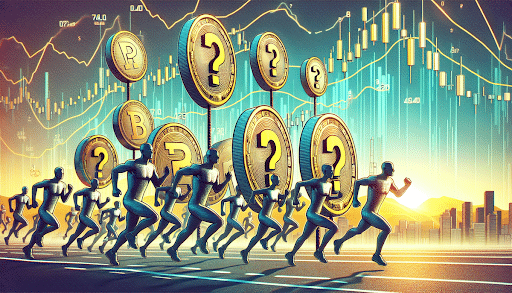Binance is a leading cryptocurrency exchange with hundreds of millions of users worldwide and a daily trading volume in the double digit billions.
While it is positioned as the top crypto exchange and a leader in the cryptocurrency world, navigating its platform can be difficult, particularly for beginners. Simple tasks like depositing or sending cryptocurrency, trading, or even locating your Binance wallet can consume a significant amount of your time if you’re new to the exchange.
This comprehensive guide will walk you through the process of locating your Binance wallet address in just a few steps.
Finding your Binance wallet address is less difficult than it appears. Simply follow the steps outlined below:
Log in to your Binance account, then go to the top right and select Wallet, then Fiat and Spot from the dropdown menu. This section is for deposits and withdrawals, and it highlights the cryptocurrencies that are available for buying, selling, and trading.
At the top right, click on Deposit —the new page will prompt you to choose the cryptocurrency you wish to deposit.
Once you have chosen your cryptocurrency, you’ll be asked to select a specific network. The image below depicts three options, including BSC, Beacon Chain, and Ethereum.
After you’ve chosen your Binance address, click the copy icon to the right or scan the QR code with your phone.
That’s it; you’ve discovered and chosen your Binance wallet address.
Many cryptocurrencies can be sent across multiple networks; thus, if the cryptocurrency you’ve chosen has this capability, you can see the various blockchains in the dropdown menu. Many cryptocurrencies support the Binance chain and BSC, so you’ll have plenty of options.
As a side note, remember to double and triple check you’re choosing the correct network address. Failure to do so will result in the loss of your funds.
Note: There are two types of Binance wallet addresses; one belongs to the Binance Chain, and the other belongs to the BNB Chain (formerly, Binance Smart Chain (BSC)), so be mindful of this since it will prompt you to choose between the two. If you’re still unsure about which network to use, try a small transaction with your BSC or Beacon address first. This way, you can ensure that you’re using the correct address and avoid losing a larger sum of money.
To begin, log in to your Binance account and select Wallet, then Fiat and Spot from the dropdown menu.
Select Bitcoin
Choose the appropriate network. Below are the various options (make sure your address matches the sender’s or you will lose your funds; for example, if the sender is using BSC to send you Bitcoins, select the BSC network.)
If possible, avoid re-using your crypto address since malicious actors might trace your transaction activity. To protect your crypto, use a strong password, double-check the addresses, and never reveal your seed words to anyone. Also, instead of leaving your funds in a custodian exchange, use a software or hardware wallet.
A cryptocurrency wallet can be either software or hardware and allows you to store, buy, sell, and trade cryptocurrencies.
The primary distinction between the two is that a software wallet is connected to the internet and can be accessed via a PC or a smartphone, whereas a hardware wallet is a physical device — similar to a pen drive — that operates offline; this has the advantage of eliminating the risk of cyber-attacks, but it is less versatile than software wallets.
In any case, crypto wallets are an excellent way to maintain complete control over your funds because they provide you with your private keys, which are essentially an alphanumeric code that grants you access to your coins and allows you to send and receive crypto. Trezor, Ledger, MetaMask, TrustWallet, and other popular crypto wallets are listed below.
Binance is regarded as one of the safest cryptocurrency exchanges in the cryptocurrency scene. Binance employs industry-standard security measures and has demonstrated proof of reserves.
It enables users to configure a variety of security methods, including biometric verification, two-factor authentication, and more. However, it is better to be safe than sorry, so never leave your funds in a cryptocurrency exchange and instead store your crypto in a reputable crypto wallet.
As you can see, locating your Binance wallet address is simple. The number of features and functions available on Binance’s dashboard may overwhelm new users. However, all you need is a little patience and you’ll be fine.














